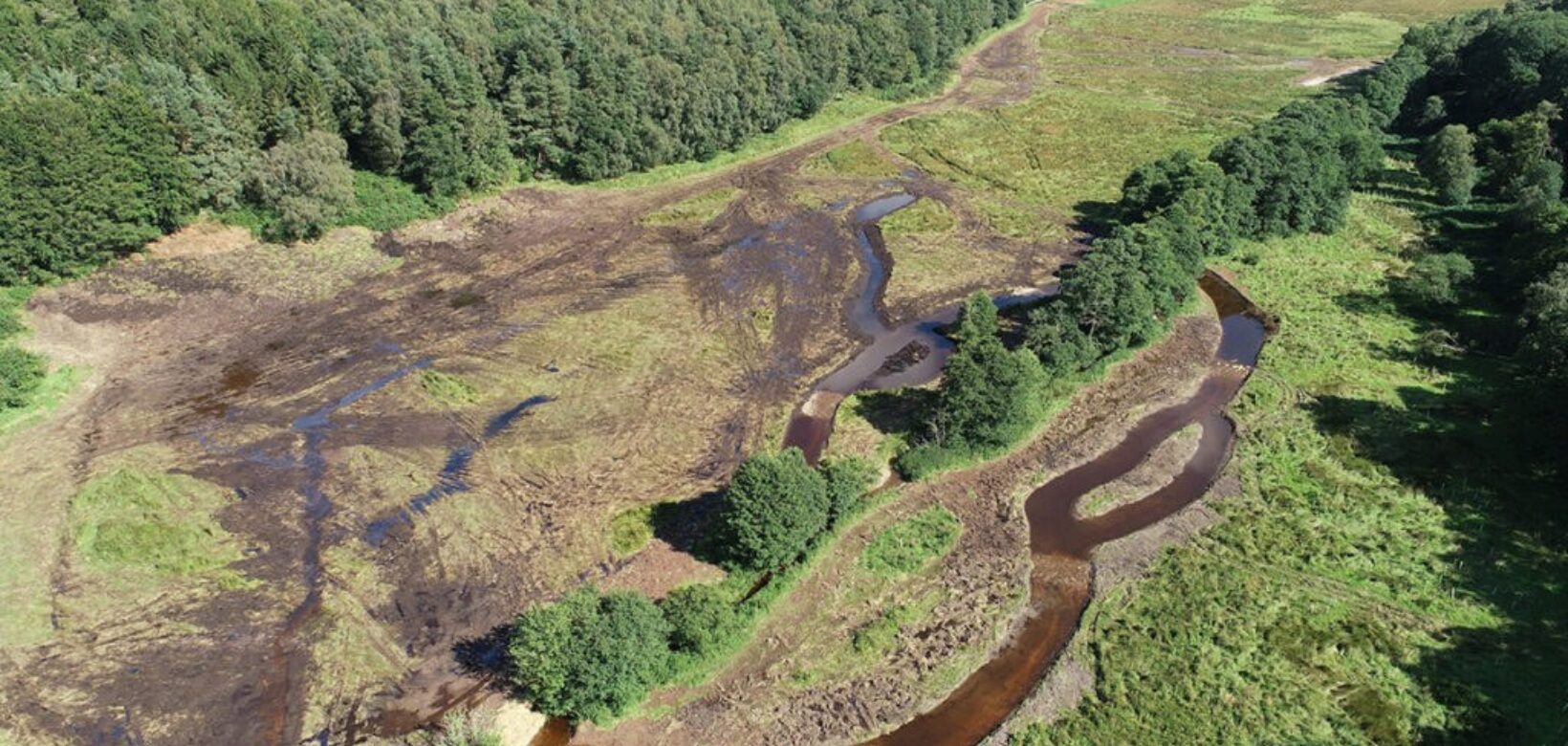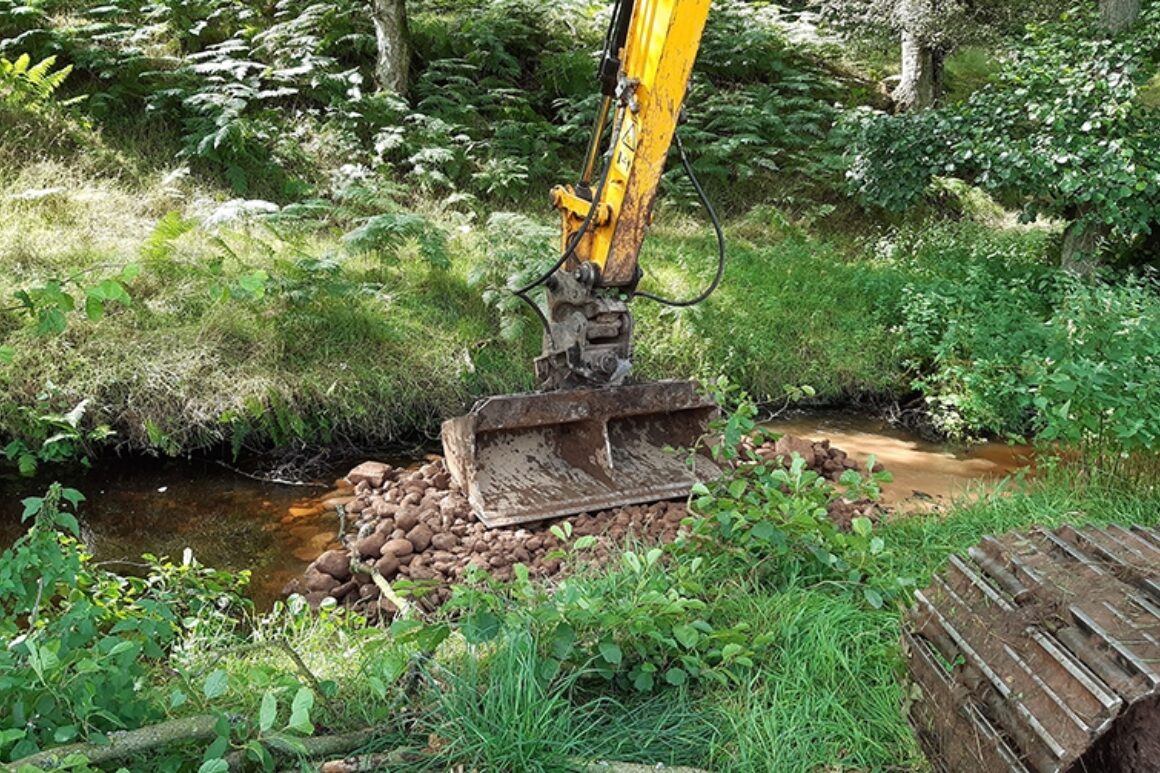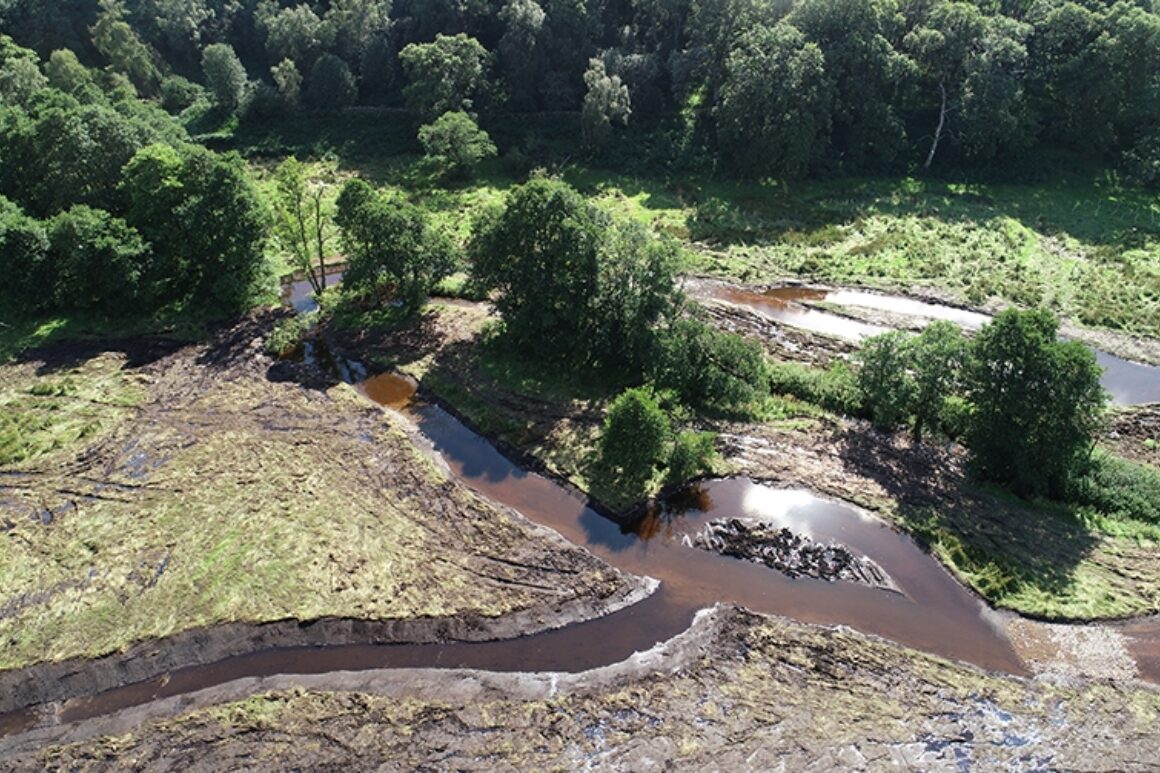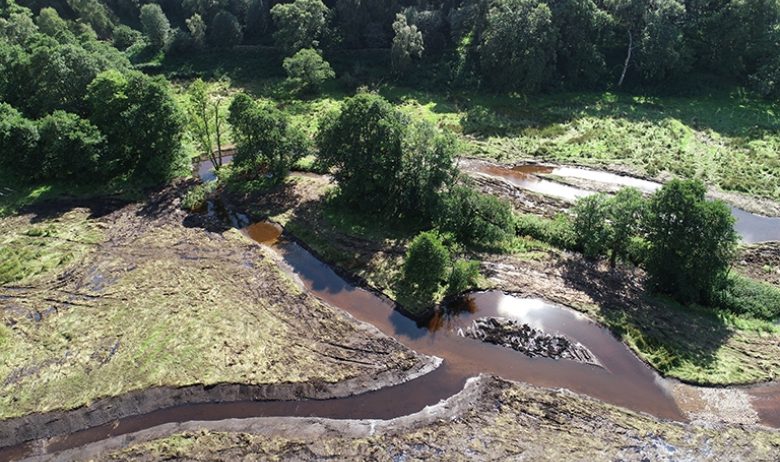We have recently completed our latest river conservation project in the Trout Beck catchment using a process of ‘assisted natural recovery’. By creating new channels, the water in the Frith Beck near Appleby has been given a little ‘helping hand’ to reconnect with its floodplain and create nearly 3 hectares (5 football pitches) of valuable, new wetland habitat.
The straightened Frith Beck follows a line of trees through a large field which the landowner, Catlin Estates couldn’t use for farming owing to the land being too wet. However, we saw that by making it even wetter, the site could be a real haven for wildlife and create an opportunity to reinstate natural river processes.
By strategically creating new channels to act as ‘backwaters’ or storage areas and others to act as ‘chutes’ to help direct water into the wetland, the river will start to naturally find its own route, meandering or wiggling over the floodplain. A ‘chute’ at the end of the wetland will direct the water back into the original channel ensuring that adjoining land is not affected.
Wildlife in the river such as fish, freshwater invertebrates and plants will benefit too by the reinstatement of natural river features such as gravel bars and riffles (shallow stretches) in the original channel. These will create a greater variety of in-river habitats for plants and animals to use, help to gently push the water into the new channels and the wetland and help to kickstart the meanders by eroding the banks.
Work to create the channels and river features was carried out by the skilled digger work of Metcalfe Plant Hire from Penrith.
Matt Healey, Contracts Director at Metcalfe Plant Hire said:
We were delighted to be appointed to undertake the works by Eden Rivers Trust. This interesting scheme was challenging at times due to the wetness of the ground not only for traversing the machinery but also for the precision required in creating the new features in the watercourses. It’s pleasing that even the tracks left by the diggers and dumpers will be colonised by different plants and create micro-habitats adding to the wetland’s biodiversity – an environmentally rewarding scheme to have in our portfolio.
Jenny Garbe, ERTs Conservation Officer said:
It has been brilliant working on this river restoration project, the designers, AquaUoS came up with some innovative ideas for assisted natural recovery. It will have multiple benefits for the river and wildlife, but also natural flood management benefits for downstream communities by slowing the flow of water and holding it for longer in the floodplain. I look forward to seeing how this scheme progresses over the next few years and monitoring how the river changes over time.
The two-phased river restoration work was kicked off last winter thanks to the Oglesby Charitable Trust who funded the erection of 1,500m of fencing to protect the beck and the planting of 2,500 trees by Eden Rivers Trust volunteers. Funding from The European Agricultural Fund for Rural Development via Natural England’s Water Environment Grant enabled the re-meandering project to go ahead.












